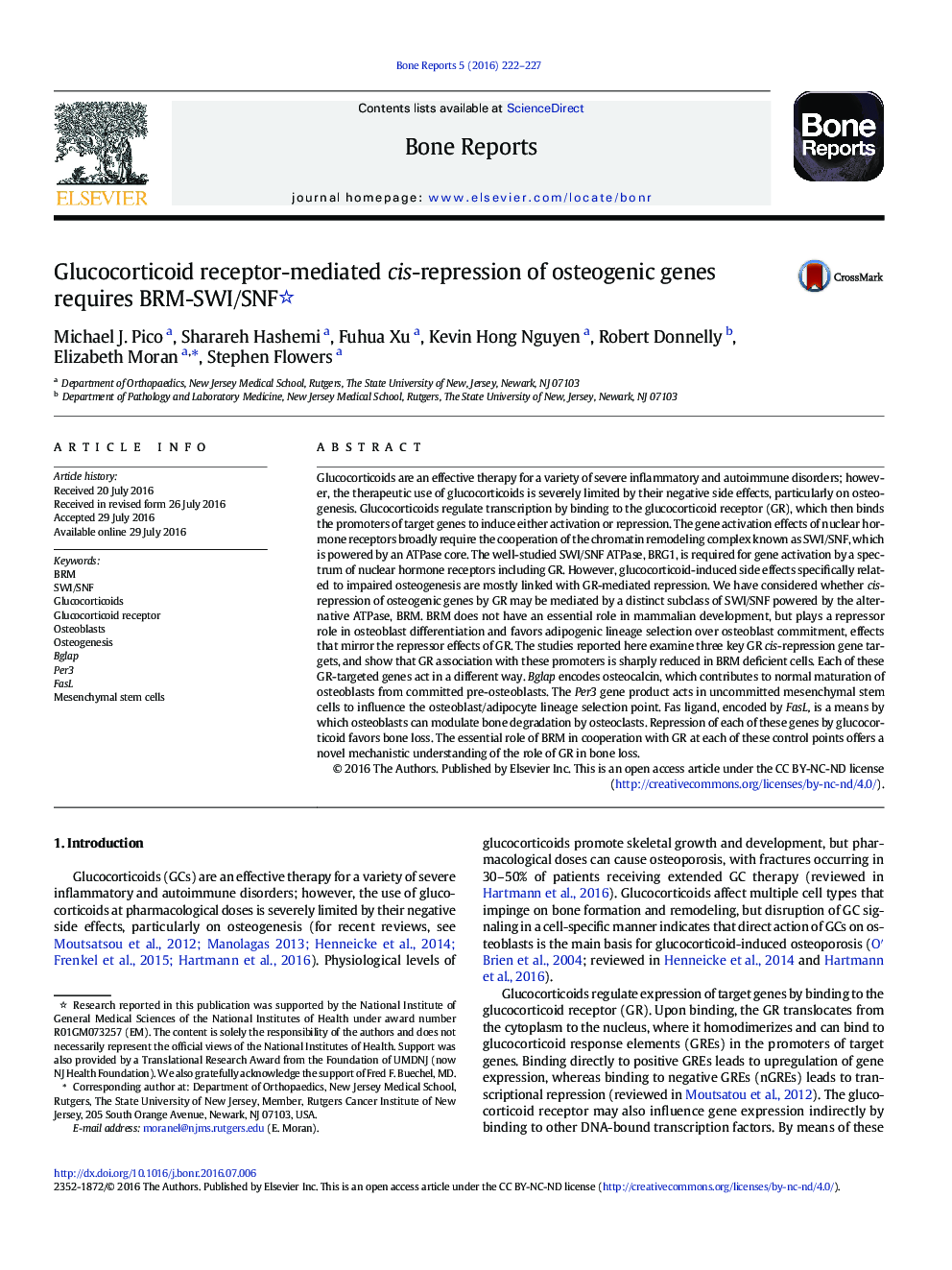| کد مقاله | کد نشریه | سال انتشار | مقاله انگلیسی | نسخه تمام متن |
|---|---|---|---|---|
| 2792325 | 1568667 | 2016 | 6 صفحه PDF | دانلود رایگان |
• Therapeutic use of glucocorticoids is limited by their negative effects on osteogenesis.
• The glucocorticoid receptor (GR) can either activate or repress gene expression.
• cis-Repression by GR drives a significant part of the negative osteogenic effects.
• The BRM-containing subclass of SWI/SNF is specifically required for cis-repression by GR.
• BRM depletion reduces negative effects of glucocorticoids on osteogenic gene expression.
Glucocorticoids are an effective therapy for a variety of severe inflammatory and autoimmune disorders; however, the therapeutic use of glucocorticoids is severely limited by their negative side effects, particularly on osteogenesis. Glucocorticoids regulate transcription by binding to the glucocorticoid receptor (GR), which then binds the promoters of target genes to induce either activation or repression. The gene activation effects of nuclear hormone receptors broadly require the cooperation of the chromatin remodeling complex known as SWI/SNF, which is powered by an ATPase core. The well-studied SWI/SNF ATPase, BRG1, is required for gene activation by a spectrum of nuclear hormone receptors including GR. However, glucocorticoid-induced side effects specifically related to impaired osteogenesis are mostly linked with GR-mediated repression. We have considered whether cis-repression of osteogenic genes by GR may be mediated by a distinct subclass of SWI/SNF powered by the alternative ATPase, BRM. BRM does not have an essential role in mammalian development, but plays a repressor role in osteoblast differentiation and favors adipogenic lineage selection over osteoblast commitment, effects that mirror the repressor effects of GR. The studies reported here examine three key GR cis-repression gene targets, and show that GR association with these promoters is sharply reduced in BRM deficient cells. Each of these GR-targeted genes act in a different way. Bglap encodes osteocalcin, which contributes to normal maturation of osteoblasts from committed pre-osteoblasts. The Per3 gene product acts in uncommitted mesenchymal stem cells to influence the osteoblast/adipocyte lineage selection point. Fas ligand, encoded by FasL, is a means by which osteoblasts can modulate bone degradation by osteoclasts. Repression of each of these genes by glucocorticoid favors bone loss. The essential role of BRM in cooperation with GR at each of these control points offers a novel mechanistic understanding of the role of GR in bone loss.
Journal: Bone Reports - Volume 5, December 2016, Pages 222–227
